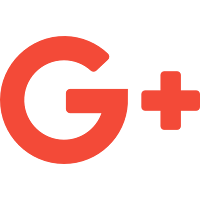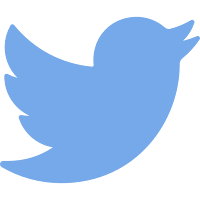1. What are Physical Quantities?
Ans: Mesearurable quantities are called Physical Quantities.
Ex- length
2. What is Measurement?
Ans: To find out the exact value of a quantity we use a procedure that is called Measurement.
3. How many types of physical quantities?
Ans: Two types of Physical Quantities - Fundamental Quantity and Derived Quantity.
4. Define Fundamental Quantity.
Ans: Fundamental quantities are unique, they do not depend on others.
Ex- length - metre, time - second.
5. Define Derived Quantity.
Ans: Derived Quantities depend on other fundamental quantities.
Ex- speed = distance/ time
= metre/ second
6. Define non-standard units.
Ans: Different body parts were used to measure the substance in earlier times are called non-standard units.
Ex- Cubit, Handspan, Footspan.
7. What is a Unit?
Ans: Physical quantity measure with known fixed quantity.
Ex- length - metre ( m )
8. Write some names of devices that measure length.
Ans: i) Ruler
ii) Vernier Callipers
iii) Measuring tape
9. Write some S.I. units with symbols.
Ans: length - metre ( m ),
mass - kilogram ( kg ),
temperature - kelvin ( k ),
electric current - ampere ( A ),
time - second ( s ),
luminous intensity - candela ( cd ),
10. What is parallax error?
Ans: Incorrect position of eyes to measure a reading is called parallax error.
11. How do you correct parallax error?
Ans: Keep your eyes on the point perpendicularly.
12. How do you measure the thickness of a page of your physics book?
Ans: Thickness of a page = total thickness of the book / total number of pages.
13. How do you measure your hair?
Ans: Diameter of the hair = total length of the turns of the hair / number of turns of hair.
14. Define area. Write the S.I. unit of area.
Ans: The amount of closed figure on plane surface is called area.
S.I. unit of area is square metre ( or m² or sq metre )
15. How do you find the area of the usual surface or figure?
Ans: Triangle - 1/2 × base × height
Circle - πr²
Rectangle - length × breadth
16 . How do you find the area of unusual figure?
Ans: We can find the area of unusual figure by graph paper.
17. Define mass. S.I. unit of mass.
Ans: How many matters are present in a substance is called mass.
S.I. unit of mass is 'kilogram'.
18. Write the name of the devices to measure the mass.
Ans: Beam balance, Electronic balance.
19. Define volume. S.I. Unit of volume.
Ans: The amount of space occupied by the substance is called volume.
S.I. Unit of volume - cubic metre ( m3 )
20. Which devices are used to measure volume?
Ans: Measuring cylinder, Measuring beaker.
21. Define Meniscus? Give an example.
Ans: Curved surface of liquid in a cylinder is called Meniscus.
Water - concave meniscus ( lower curved )
Mercury - convex meniscus ( upper curved )
22. How do you find the volume of the usual figure?
23. i) 1 litre = ____ ml ii) 1 litre = _____ cm3
Ans: i) 1000 ml ii) 1000 cm3
24. How do you measure the volume of an unusual substance?
27. What is temperature?
Ans: Temperature is the hotness or coldness of a body.
S.I. Unit of Temperature is kelvin ( K ), the other two common Units are degree Celsius ( ℃ ) and degree Fahrenheit ( ℉ ).
28. Which device is used to measure temperature?
Ans: A thermometer is used to measure temperature. ( Clinical Thermometer and Laboratory Thermometer ).
29. Write the difference between a clinical thermometer and a laboratory thermometer.
Ans:
Clinical Thermometer | Laboratory Thermometer |
i) Measure body temperature | Measure room temperature |
ii) Has kink | Has no kink |
iii) Range 35 ℃ to 42℃ | Range -10℃ to 110℃ |
30. What is the function of kink?
Ans: The kink prevents the mercury to back into the bulb.
31. What is the relation between the Centigrade and Fahrenheit scales.
Ans:

32. Which liquid is used in thermometers?
Ans: Mercury is used in thermometers.
33. Why mercury is used in thermometers?
Ans: i) it is always in pure form.
ii) it is shiny and nonsticky so easily visible.
iii) good conductor heat with a wide range -39℃ to 357℃
34. What is the normal body temperature of a human?
Ans: 37 ℃ or 98. 6 ℉
35. What is the use of maximum and minimum thermometers?
Ans: It is used to find the maximum and minimum temperature of a particular day place.
36. Which devices are used to measure time?
Ans: i) Earlier time - Sundial, Sand clock.
ii) Nowadays - Digital watch, Analogue watch.
37. How many clock systems are used?
Ans: i) 12-hour clock system -
7:30 am ( it means morning ), 7:30 pm ( it means evening )
ii) 24-hour clock system -
00:00 hours ( midnight ), 07:30 hours ( morning ),
12:00 hours ( noon ), 19.30 hours ( evening )
38. Write the full form of am. and pm.
Ans: am - Ante meridien
pm - post meridien







.png)





Thank you sir.
ReplyDeleteFor Westing your valuable time for us.